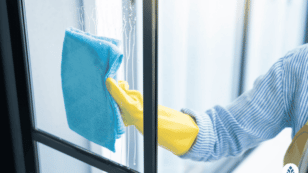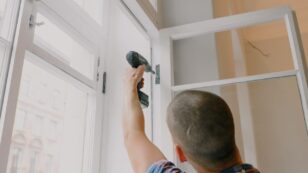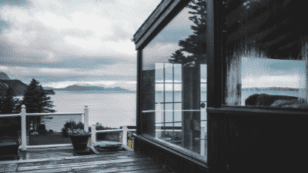
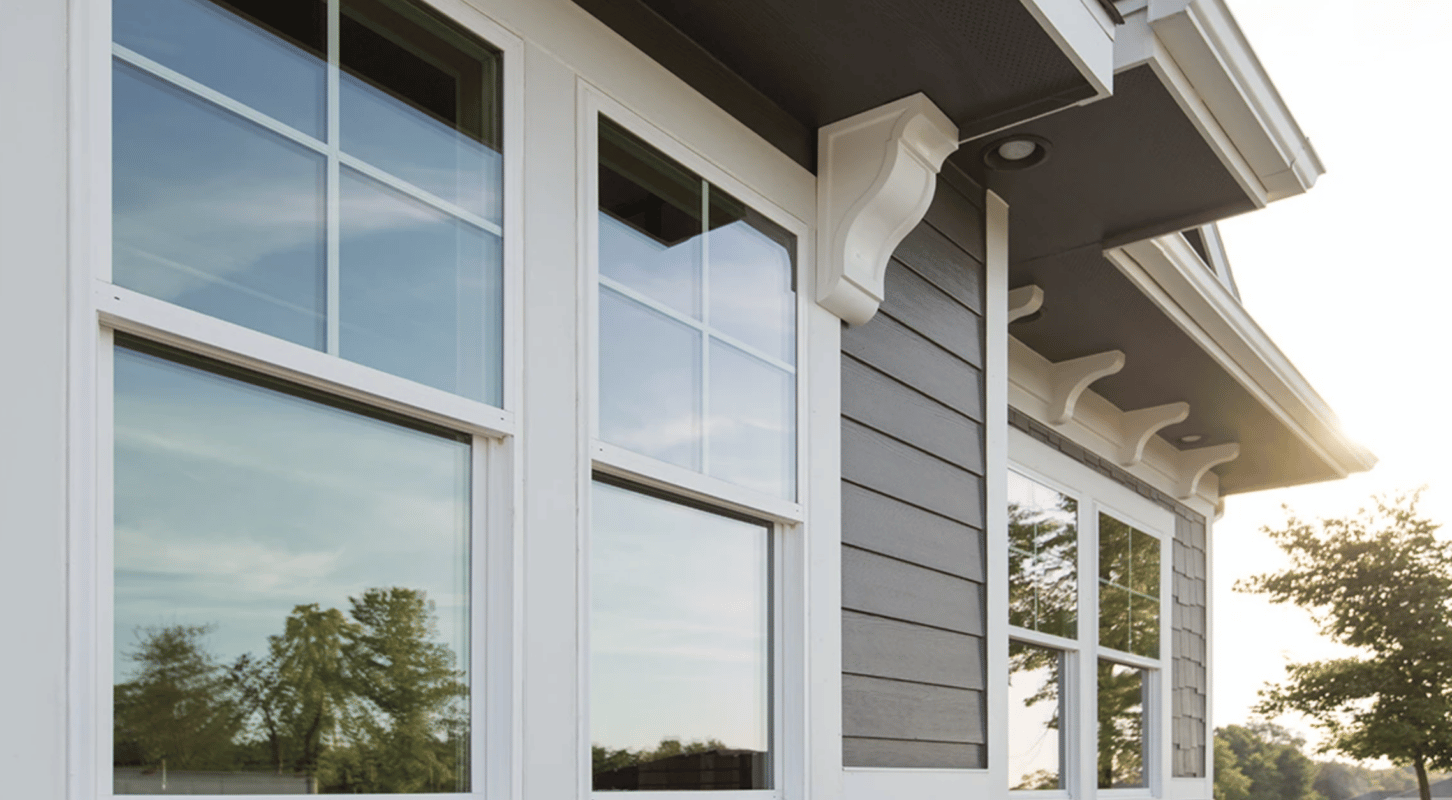
23 Types of Windows For Homes (Examples & Styles)
In this guide on different types of windows, you’ll learn:
- What are the most common types of windows?
- What are the pros and cons of each type?
- How much does it cost to install and/or replace them?
- What energy rating do each of the windows have?
If you are wondering what type of window is right for your home or are curious about their cost and energy efficiency, this guide will help you obtain all the necessary information to make the right window choice. Enter you zip code below to get a personalized quote on window options near you.
Each product and or company featured here has been independently selected by the writer. You can learn more about our review methodology here. If you make a purchase using the links included, we may earn commission.
When it comes to choosing a window to install in your home, you have far more options than you might think. There are 23 different styles, all with varying functionality, aesthetics and, most importantly, levels of energy efficiency. Below, we’ll be explaining the differences between every window style, discussing the pros and cons of each and providing some insight into which are the most energy efficient.
Types of Replacement Windows

Renewal by Andersen

Save $375 Off Each Window
Average cost
Pros
- Great industry reputation
- Award-winning company
- Member of US Green Building Council
- Manufactures products in-house
Cons
- No lifetime warranty
- More expensive than competition

Window World
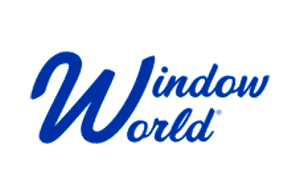
200 Locations Nationwide
Average cost
Pros
- EnergyStar Partner
- Large service area
- Wide variety of products and services
- Great industry reputation
- Lifetime warranty
Cons
- Quality of service will depend on your area

Window Nation
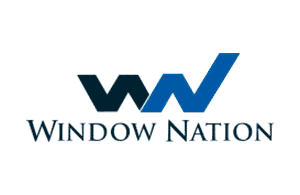
9 States (75 miles from showrooms)
Average cost
Pros
- Award-winning company
- Wide variety of products and services
- Manufactures products in-house
- Custom Designs
Cons
- Installation not covered by warranty
- Limited service area
Casement Windows
You’ll often see casement windows as a component of bay windows, but they can stand on their own as well. This type of window has hinges on one side, and the other side pivots out, away from your home’s exterior. Casement windows usually open and close using a crank located on the inside of the window.
Cost
The average cost to install a casement window is around $725. You could purchase an average casement window for around $450 if you plan to do the installation yourself as a DIY home improvement project.
Energy Efficiency
Casement windows are the most energy-efficient style among windows that open because the sash isn’t meant to slide freely in the window frame. Because of this, a tighter seal using compression is possible.
Pros
- Highly energy efficient
- Open to provide airflow
- Single pane makes cleaning easy
Cons
- Expensive
- More prone to break-ins than other opening styles
- Few sizes available
Transom Windows
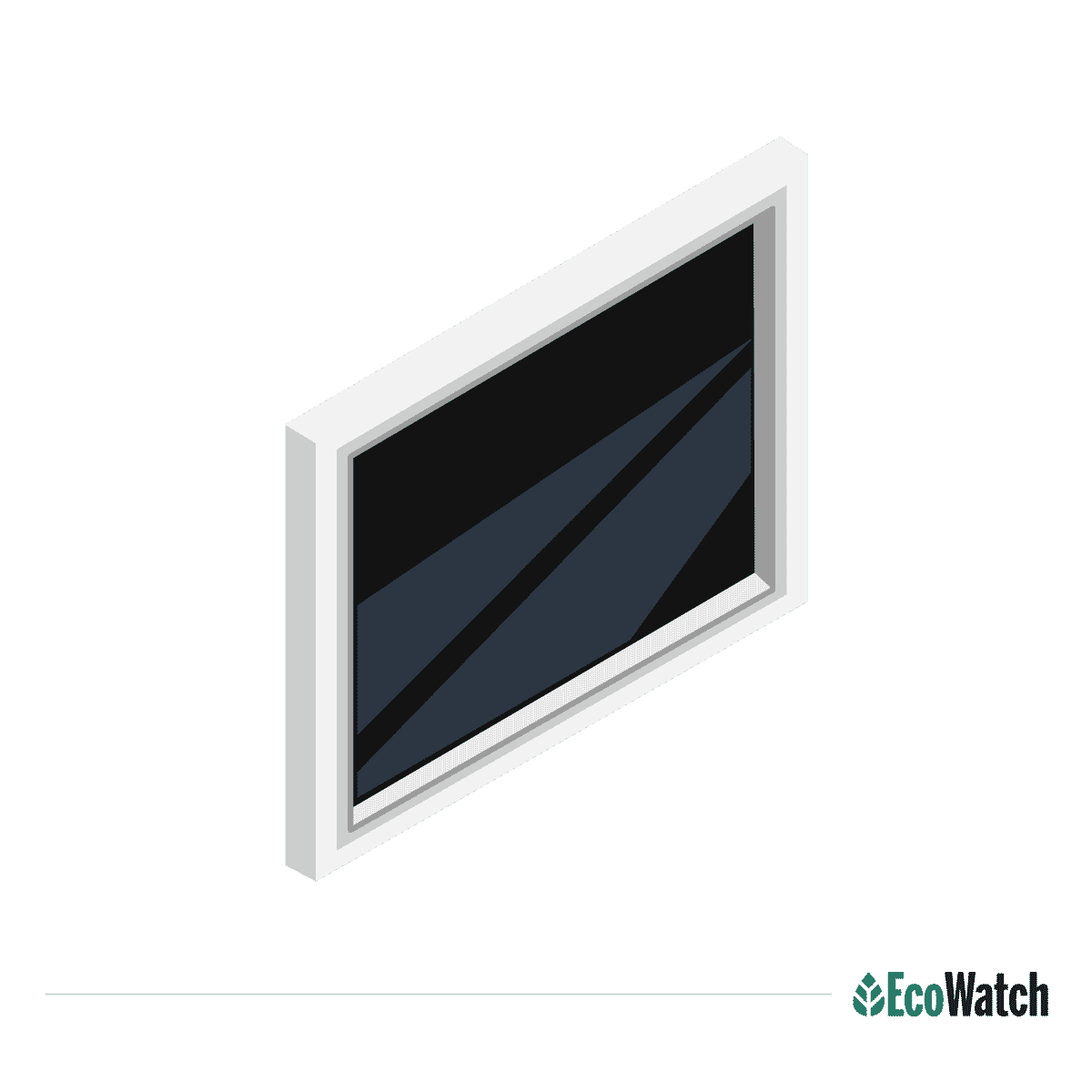
Cost
The average cost to install a transom window varies quite a lot based on the quality, size, and shape of the window you need. They can range from around $200 up to over $1,750 in some cases such as curved options like fanlights.
Energy Efficiency
Transom windows are highly energy efficient because they don’t open. They provide natural light in your home without the limited efficiency of a breakable seal.
Pros
- Highly energy efficient
- Let sunlight in while maintaining privacy
- Improves the appearance of your home’s exterior
Cons
- No ventilation offered
- Can be very expensive
- Can be challenging to clean without a stepladder
Awning Windows
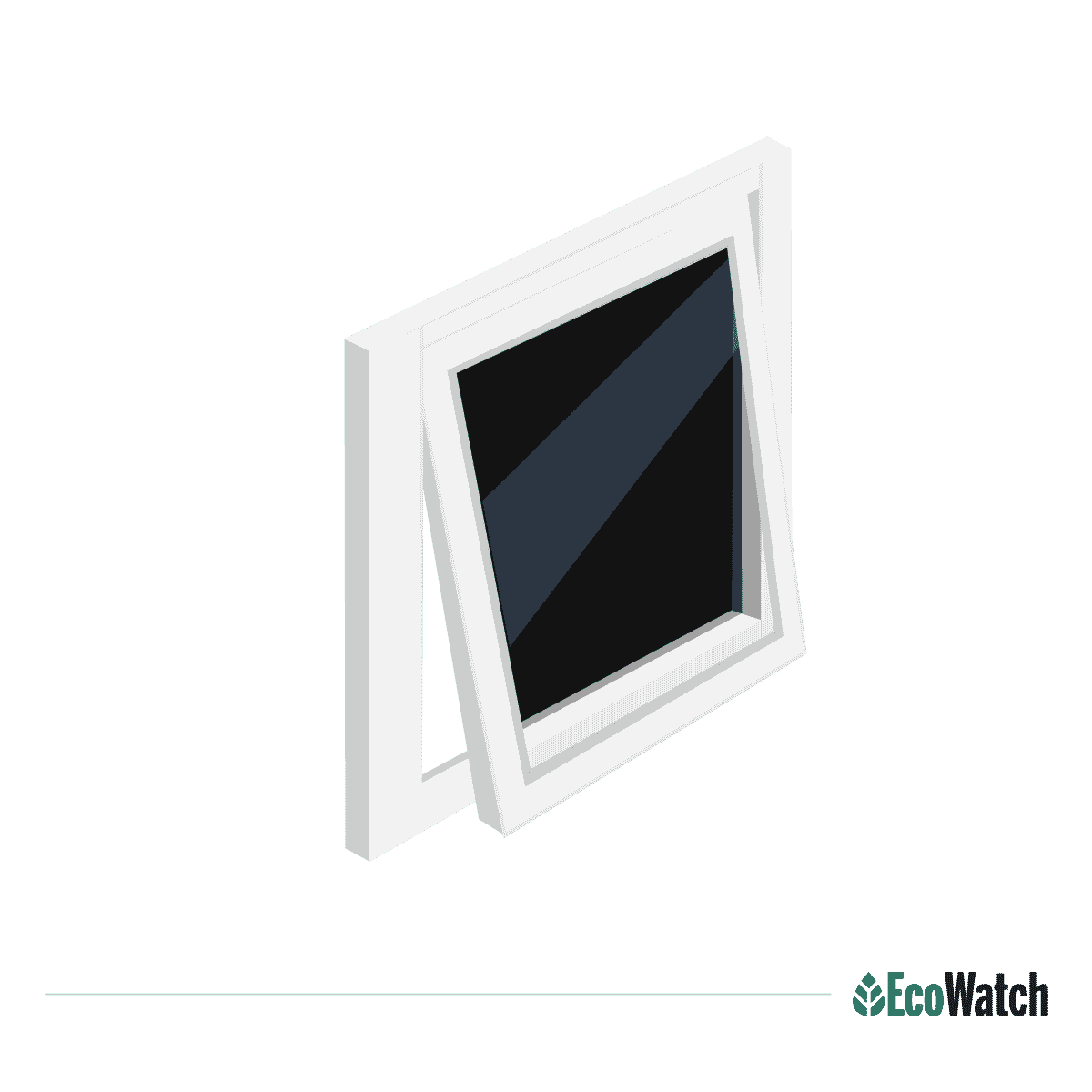
Cost
You can expect to pay around $600 to $700 for a new awning window installation, depending on the size and location.
Energy Efficiency
Like casement windows, awning windows create a tight compression seal when closed to provide the benefit of an openable window with maximum energy efficiency.
Pros
- Very energy efficient
- Protects your home’s interior from rain when opened
- Provides ventilation
Cons
- Expensive for the size
- Not ideal for every room
- Can impede on exterior space
Storm Windows
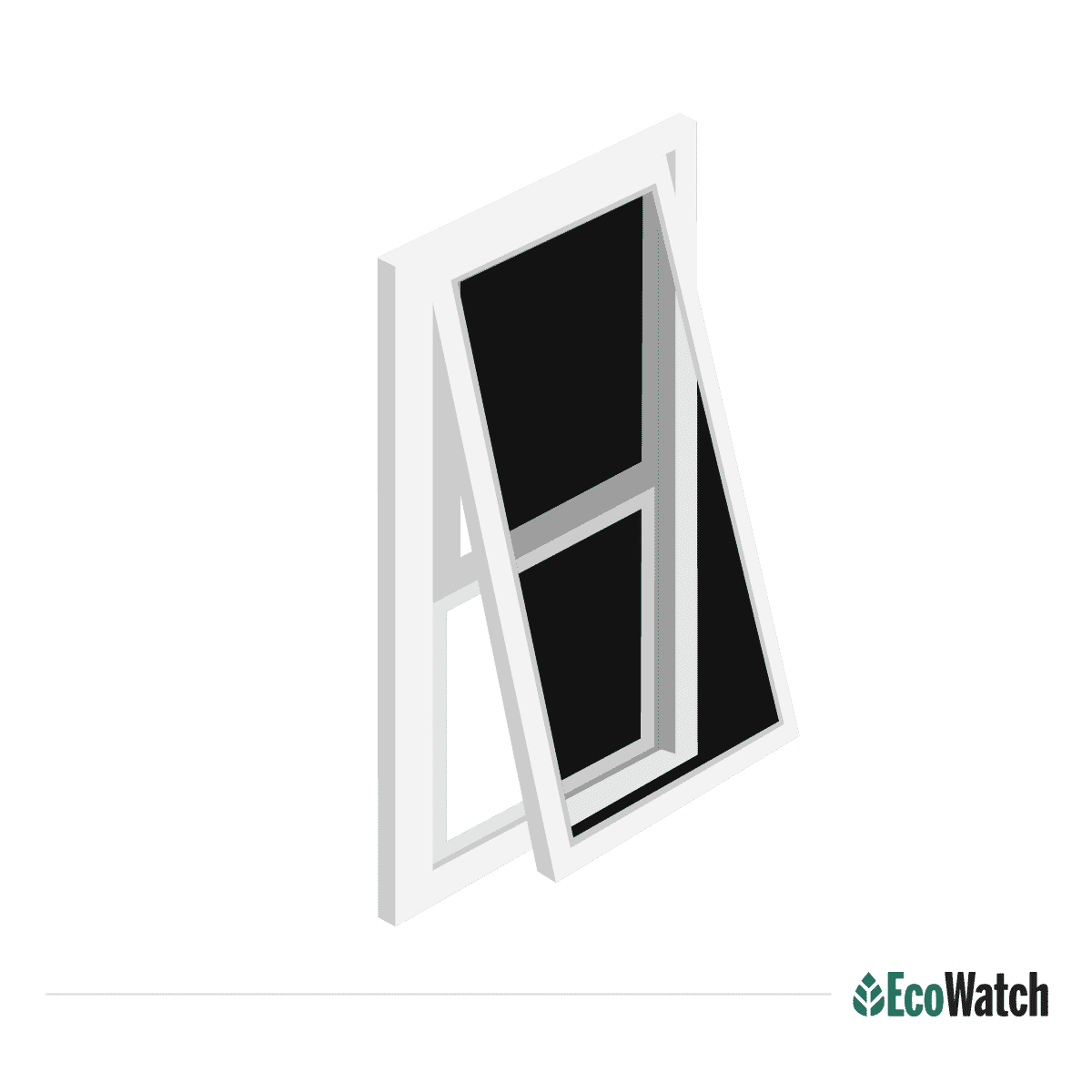
Cost
Storm windows are very affordable and usually average around $150 each. They can save you from spending multiple hundreds of dollars on the windows they protect and save you money on your energy bills.
Energy Efficiency
Storm windows aren’t particularly energy efficient on their own (if your regular windows are open). However, when your regular windows are closed they add to your home’s energy efficiency by providing another pane that insulates your windows and home.
Pros
- Increase your home’s energy efficiency
- Very affordable
- Keep more costly windows safe from damage
Cons
- No ventilation offered
- Can detract from your home’s exterior appearance
- Most homeowners remove them in seasons of non-threatening weather
Bay Windows
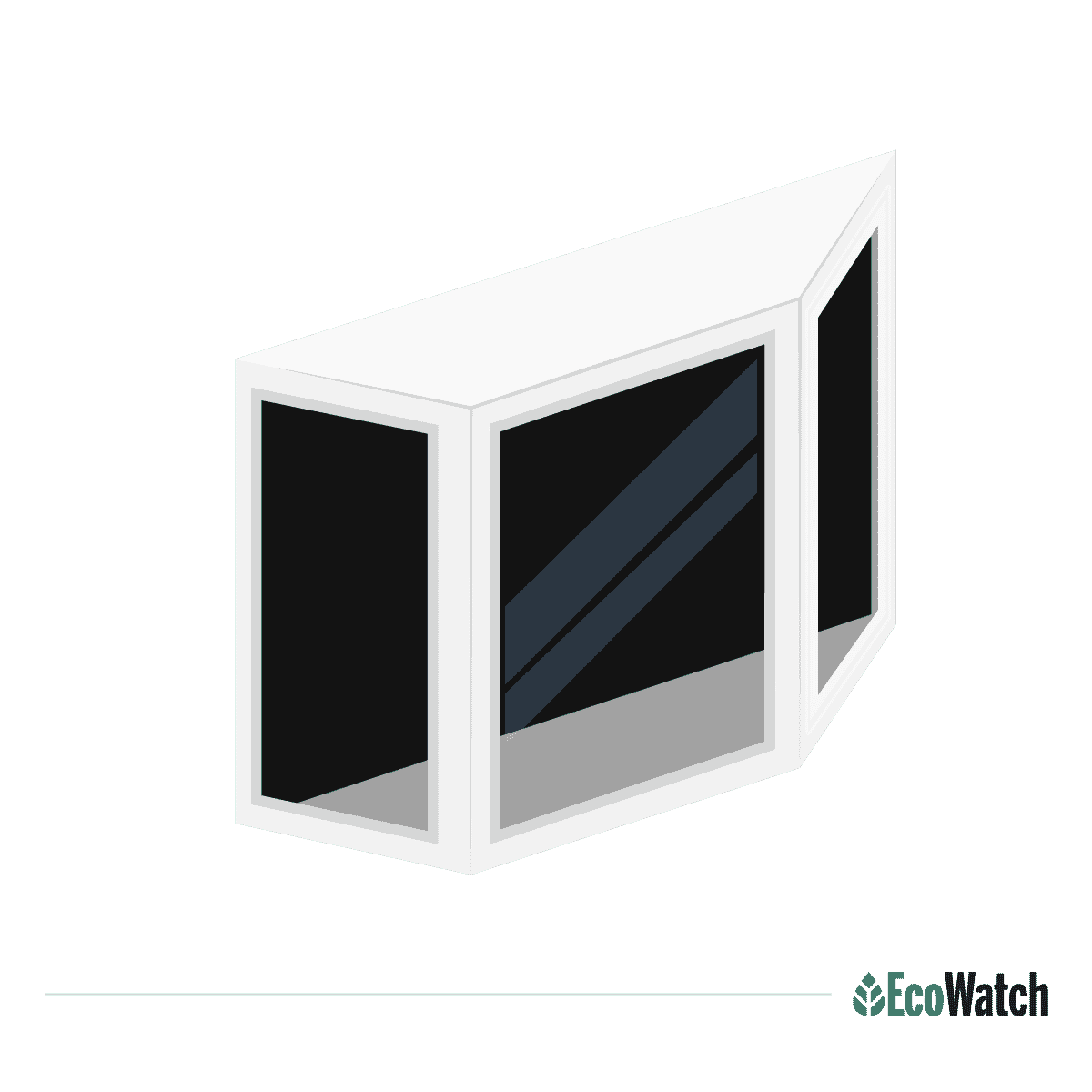
Cost
The major downside of bay windows is the cost. In general, you can expect to pay around $2,200 to install one, on average, or anywhere from $750 to $5,000, depending on the size and location.
Energy Efficiency
The different surfaces of bay windows can be configured to open completely or partially and have one or several panes. Those that open aren’t as energy efficient as those that don’t. Opening bay windows with casement-style panes are more energy-efficient than those with single-hung or double-hung windows. Given the large size of the glass panes, bay windows are among the least energy-efficient styles that open.
Pros
- Add beauty to your home
- Makes interior spaces feel larger
- Can provide ventilation
Cons
- Less energy-efficient than smaller options
- Very expensive
- Limited selection of sizes
Glass Block Windows

Cost
Glass block windows are a bit on the expensive side, at an average of around $750. The size of the window and the number of blocks you want can bring this price up or down significantly.
Energy Efficiency
Glass block windows are exceptionally thick, and they don’t open to allow ventilation. As such, they are the best windows for energy efficiency.
Pros
- Allow natural light in while maintaining privacy
- Add decorative flair to your home
- The most energy-efficient style
Cons
- Don’t allow ventilation
- Relatively expensive for the size
- Not to everyone’s taste
Jalousie Windows
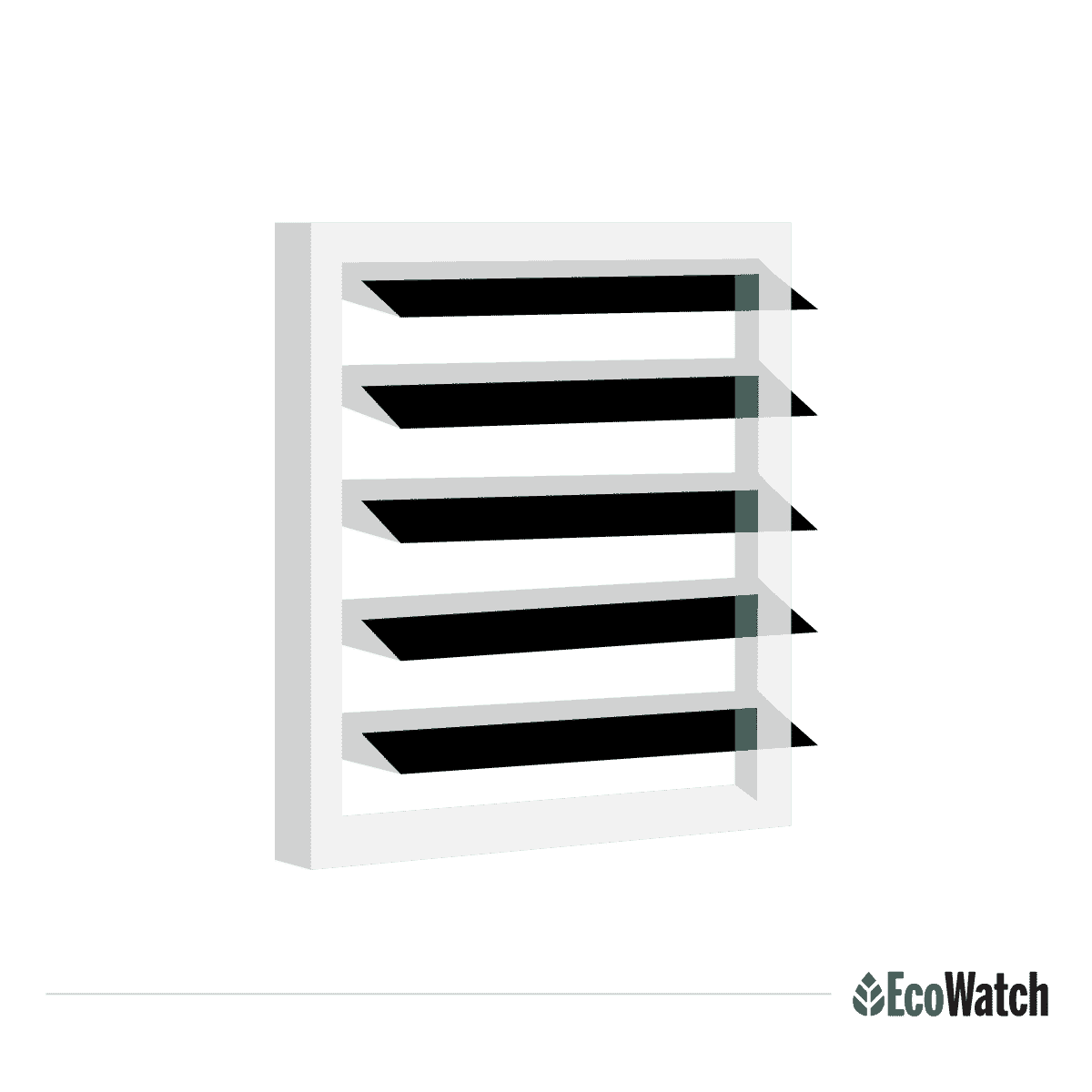
Cost
Jalousie windows are very affordable, averaging around $350 each for the materials and installation. However, you might have difficulty finding them, as they are quite rare.
Energy Efficiency
Jalousie windows have multiple panes that seal against each other. As the seals are intrinsically loose, jalousies are the least energy-efficient windows out there.
Pros
- Provide ventilation
- Add a unique look to your home
- Very affordable
Cons
- Low energy efficiency
- Not ideal for extreme climates
- Hard to find
Double-Hung Windows
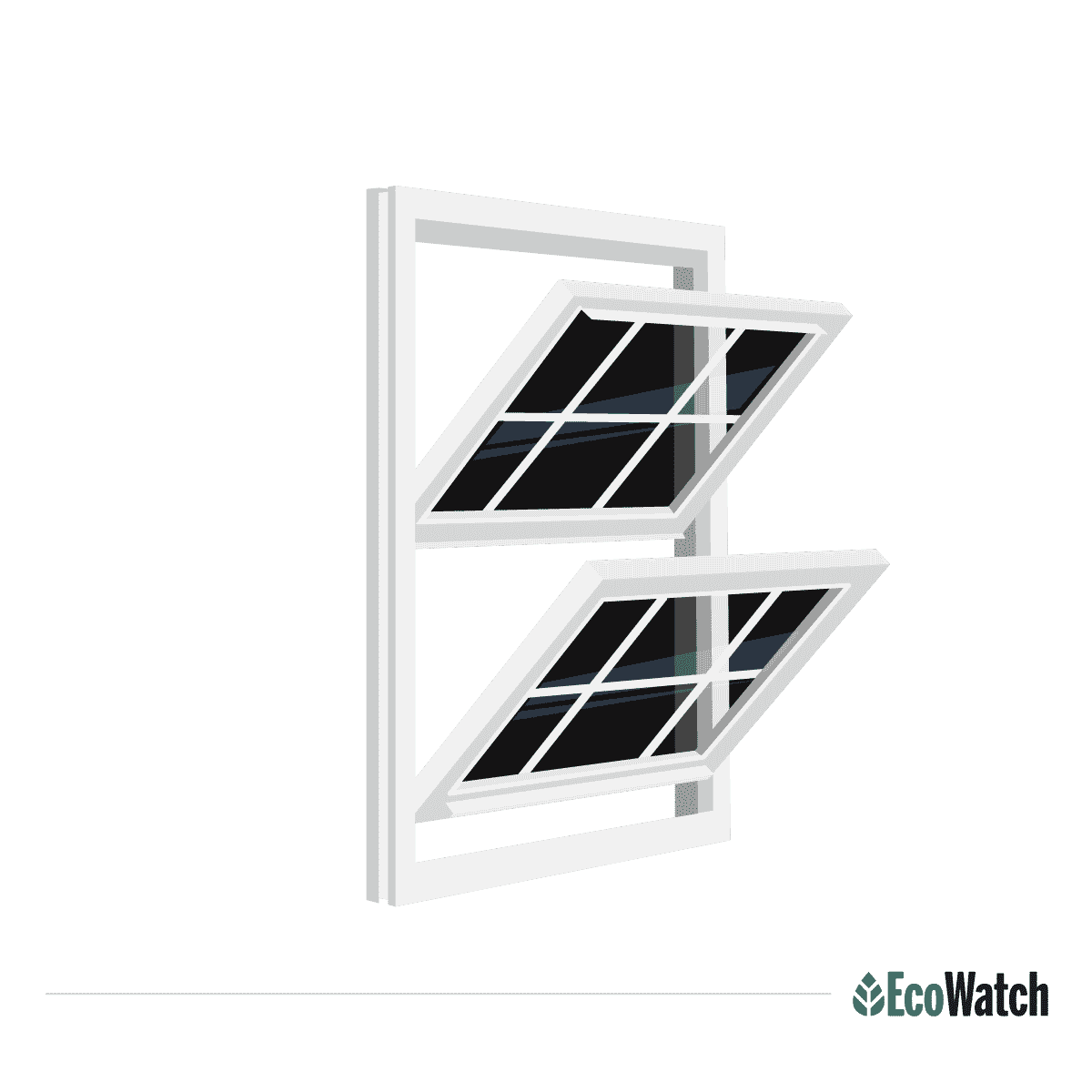
Cost
Double-hung windows cost around $450 to replace, making them one of the more affordable options. They also come in a massive variety of sizes, making it easy to find new windows or replacement windows.
Energy Efficiency
Modern double-hung windows are relatively energy-efficient, but they lose some efficiency because the sashes need to slide and can’t be sealed too tightly.
Pros
- Widely available
- Provide ventilation
- Affordable
- Easy to clean
Cons
- Lose some energy efficiency to sliding sashes
- More costly than single-hung windows
- Require more maintenance than many other opening styles
Single-Hung Windows
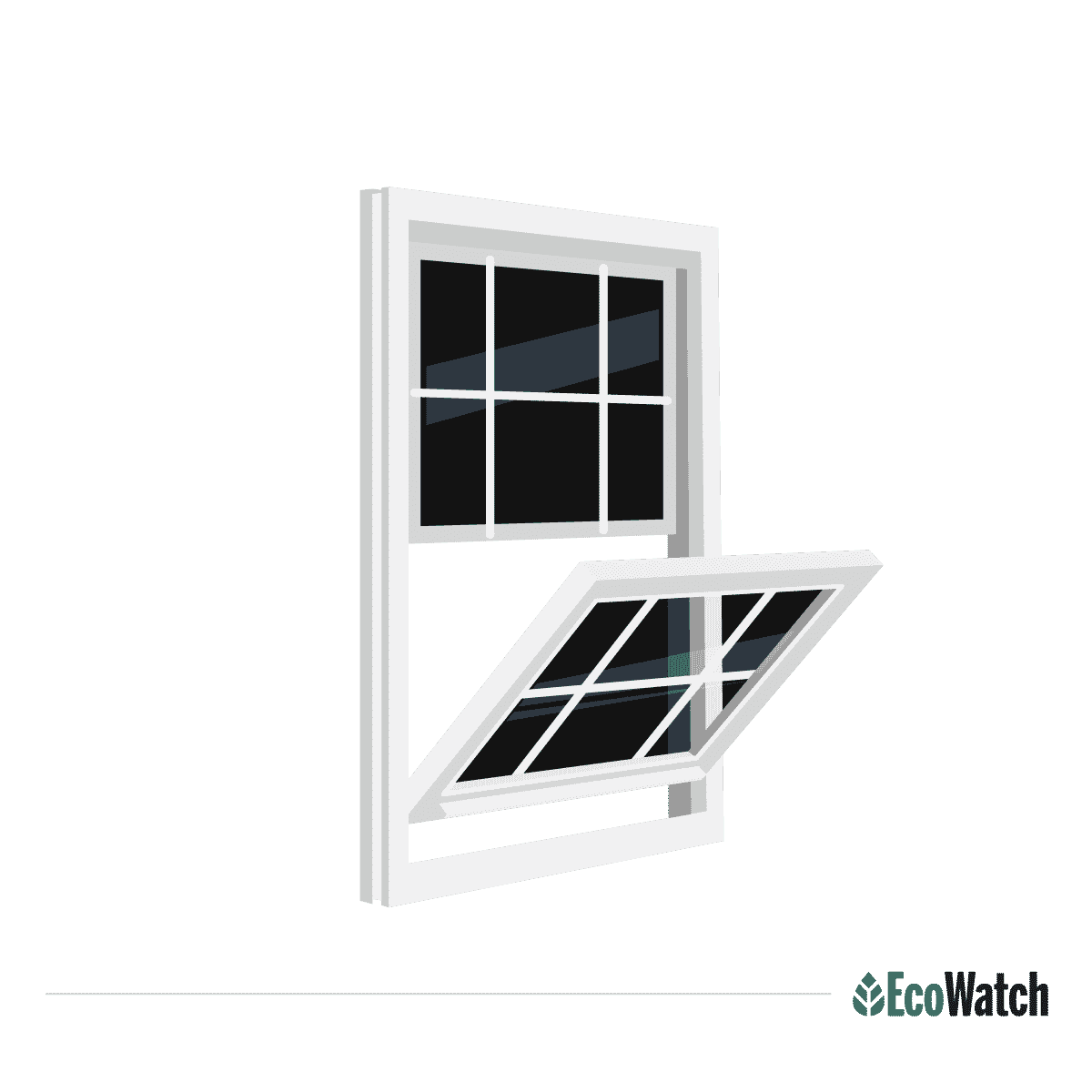
Cost
Single-hung windows are some of the most affordable window options available. The average cost to install one is around $300 for the labor and the materials.
Energy Efficiency
Single-hung windows are more energy-efficient than double-hung windows because of the upper sash that is fixed and permanently sealed. However, they still aren’t as efficient as casement windows because the bottom sash needs to slide and the seal can’t be as tight.
Pros
- More energy efficient than double-hung windows
- Very affordable
- Provide ventilation
Cons
- Can be challenging to clean
- Offer less venting than double-hung options
- Limited functionality
Picture Windows
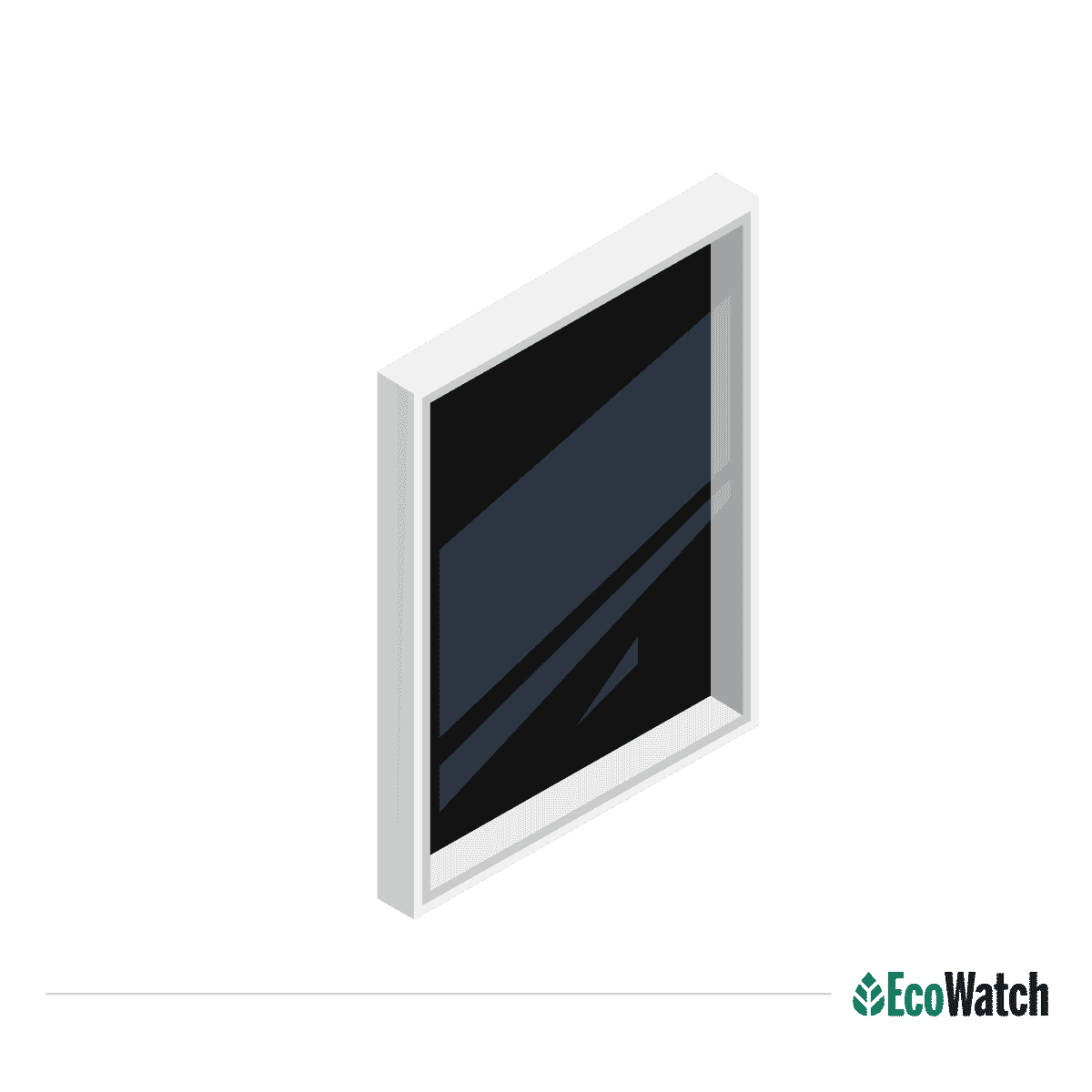
Cost
A picture window typically costs around $350 to install, making them very affordable options where you don’t need ventilation.
Energy Efficiency
Picture windows are fixed and have no movable sashes so they are more energy-efficient than all openable windows.
Pros
- Highly energy efficient
- Very affordable
- Provide natural sunlight for your interior space
Cons
- No ventilation
- Can be challenging to clean the exterior
- Not available in as many sizes as double-hung options
Sliding Windows
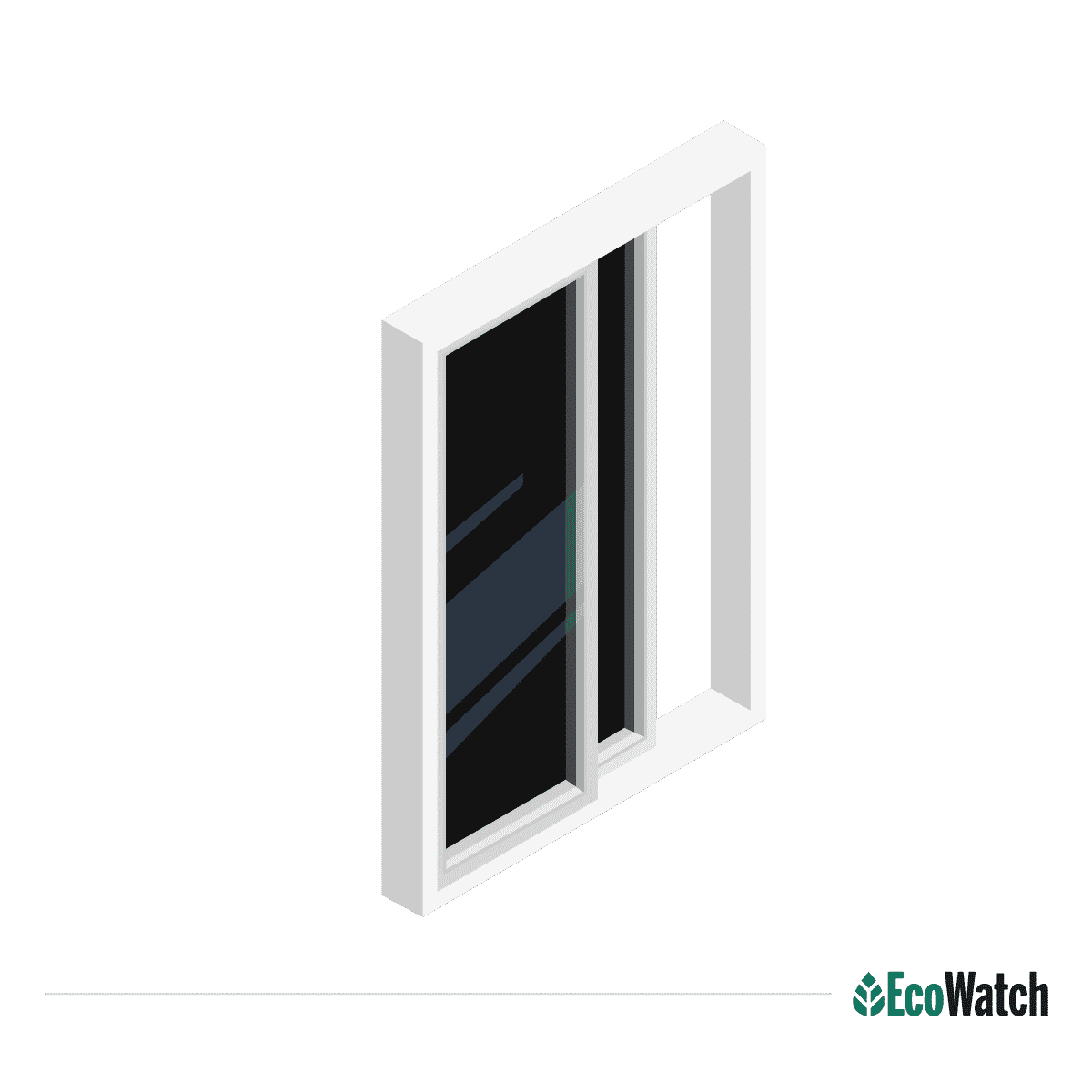
Cost
Sliding windows average around $500 to install, making them moderately expensive. Larger sliding windows can increase significantly in price.
Energy Efficiency
Sliding windows are not very energy efficient. Not only do they have sliding sashes that reduce efficiency along the tops and bottoms of the sashes, but the individual sashes can only seal with each other where they meet, creating a weaker seal than with the frame.
Pros
- Allow ventilation
- High level of security in some cases
- Don’t protrude into your yard
Cons
- Track can accumulate debris and make sliding challenging
- Not very energy efficient
- Can be challenging to clean
Egress Windows
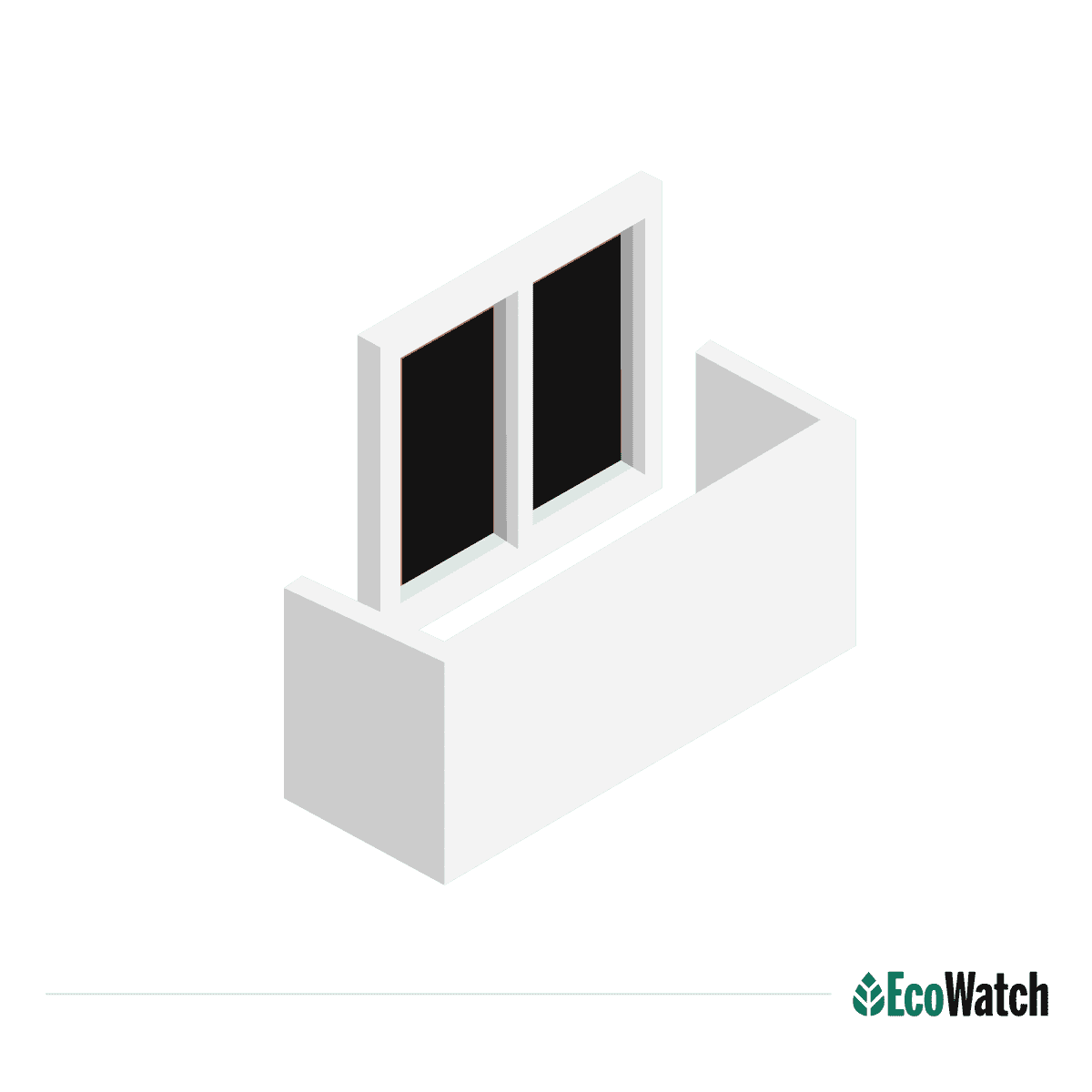
Cost
Egress windows cost around $4,000 to install. The cost is so high because they are installed in your foundation wall, which might require reinforcing in some areas and getting through the concrete to install the window frame. The excavation outside of your window can also add to the cost.
Energy Efficiency
Egress windows can open in a variety of ways, and the energy efficiency depends somewhat on how your window opens. For example, casement egress windows are more energy-efficient than double-hung egress windows. None are as energy-efficient as fixed windows, though.
Pros
- Provide sunlight in basement
- Provide ventilation
- Offer a means of escape in case of an emergency
Cons
- Not as energy-efficient as fixed windows
- Require a drainage area that can clog and cause issues like leaks
- Very expensive to install
Garden Windows

Cost
Garden windows are very expensive, averaging around $2,500 for a professional installation. Larger garden windows will naturally be more costly.
Energy Efficiency
These types of windows are fixed, so they are quite energy efficient. They aren’t as efficient as flat fixed windows like picture windows because they have more glass that transmits heat and cold, but they are more efficient than all opening windows.
Pros
- Add beauty to your home
- Provide a place to grow plants
- Allow ample sunlight into your interior
Cons
- Can be difficult to clean
- Very costly to install
- Not as efficient as other fixed window styles
Bow Windows
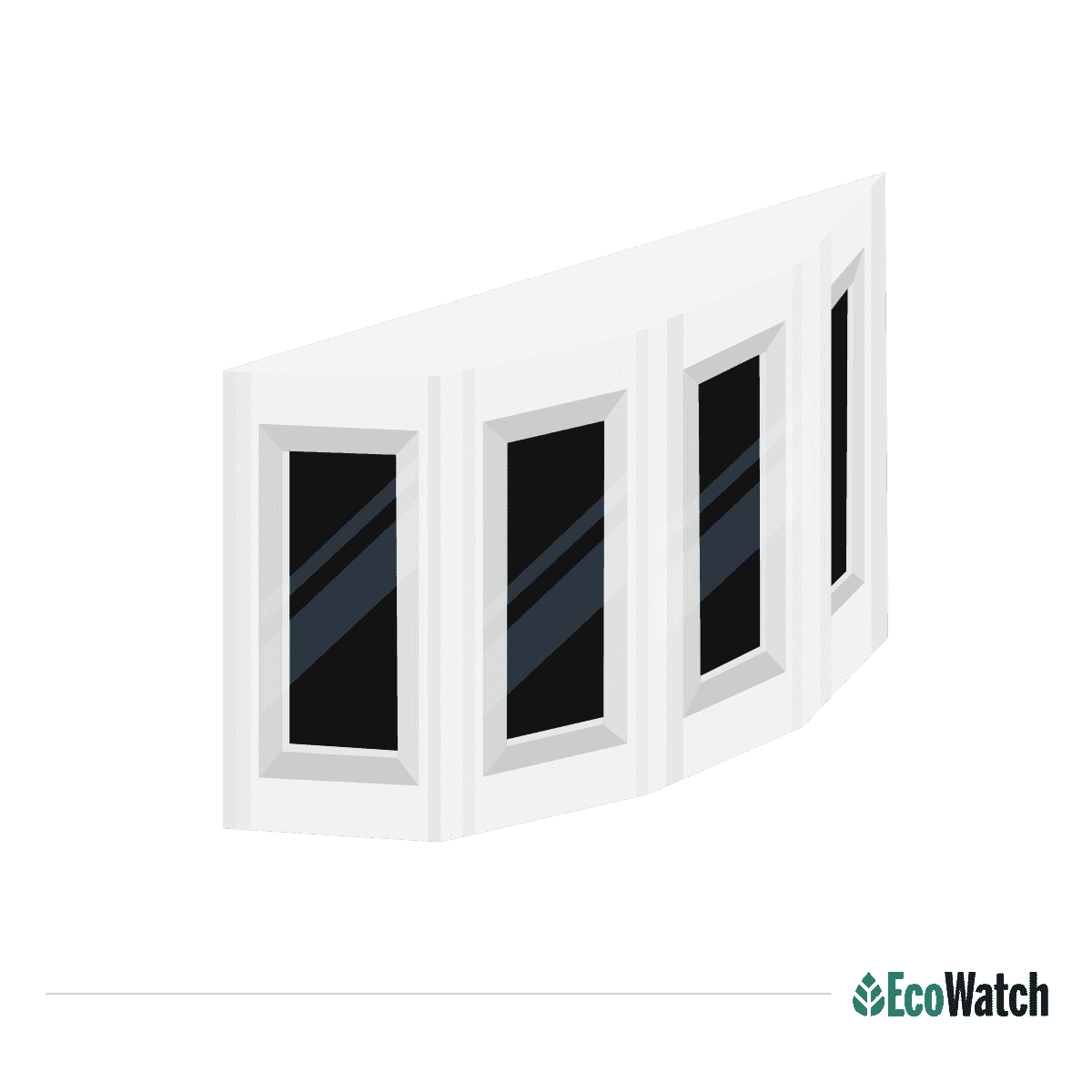
Cost
Bow windows are expensive, averaging around $5,000 to buy and install. Larger options or those with more panes can top $7,500 in some cases.
Energy Efficiency
Bow windows don’t open, so they’re more energy-efficient than styles that do. Given how much glass is exposed to the elements, though, they aren’t as efficient as other fixed options.
Pros
- Add elegance and beauty to your home
- Make your interior space look larger
- Provide plenty of sunlight
Cons
- One of the most expensive window styles
- Not as energy-efficient as flat fixed windows
- Challenging to clean
Arched Windows
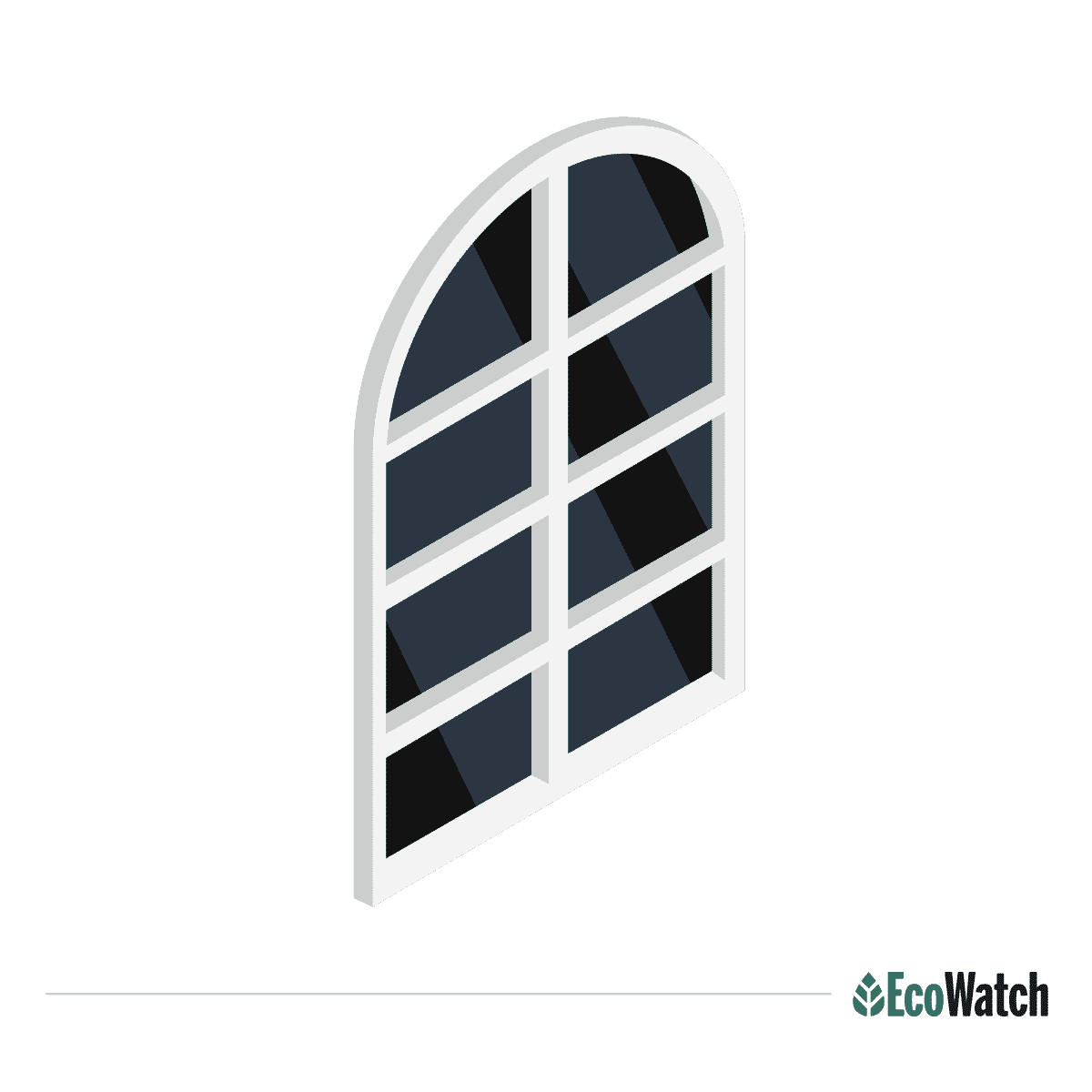
Cost
Arched windows are more challenging to make and install than rectangular picture windows, so they naturally cost more. The average arched window will cost you around $400.
Energy Efficiency
Arched windows have no moving sashes, so they are pretty energy efficient. The only styles that provide more energy efficiency are glass block windows or another smaller fixed window option.
Pros
- Highly energy efficient
- Add sunlight to your interior space
- Relatively affordable
Cons
- Don’t offer ventilation
- Can be challenging to clean
- Not available in as many sizes as more popular styles
Hopper Windows

Cost
Hopper windows are quite small and expensive for the size but affordable based on the price — around $400 each.
Energy Efficiency
Hopper windows are more energy-efficient than styles with sliding sashes, but they aren’t quite as efficient as fixed windows.
Pros
- Add sunlight and ventilation to basements
- Don’t protrude into your yard or walkway
- More energy efficient than sliding windows
Cons
- Expensive for the size
- Open into your living area and could be hazardous
- Can allow rain into your living space
Skylight Windows
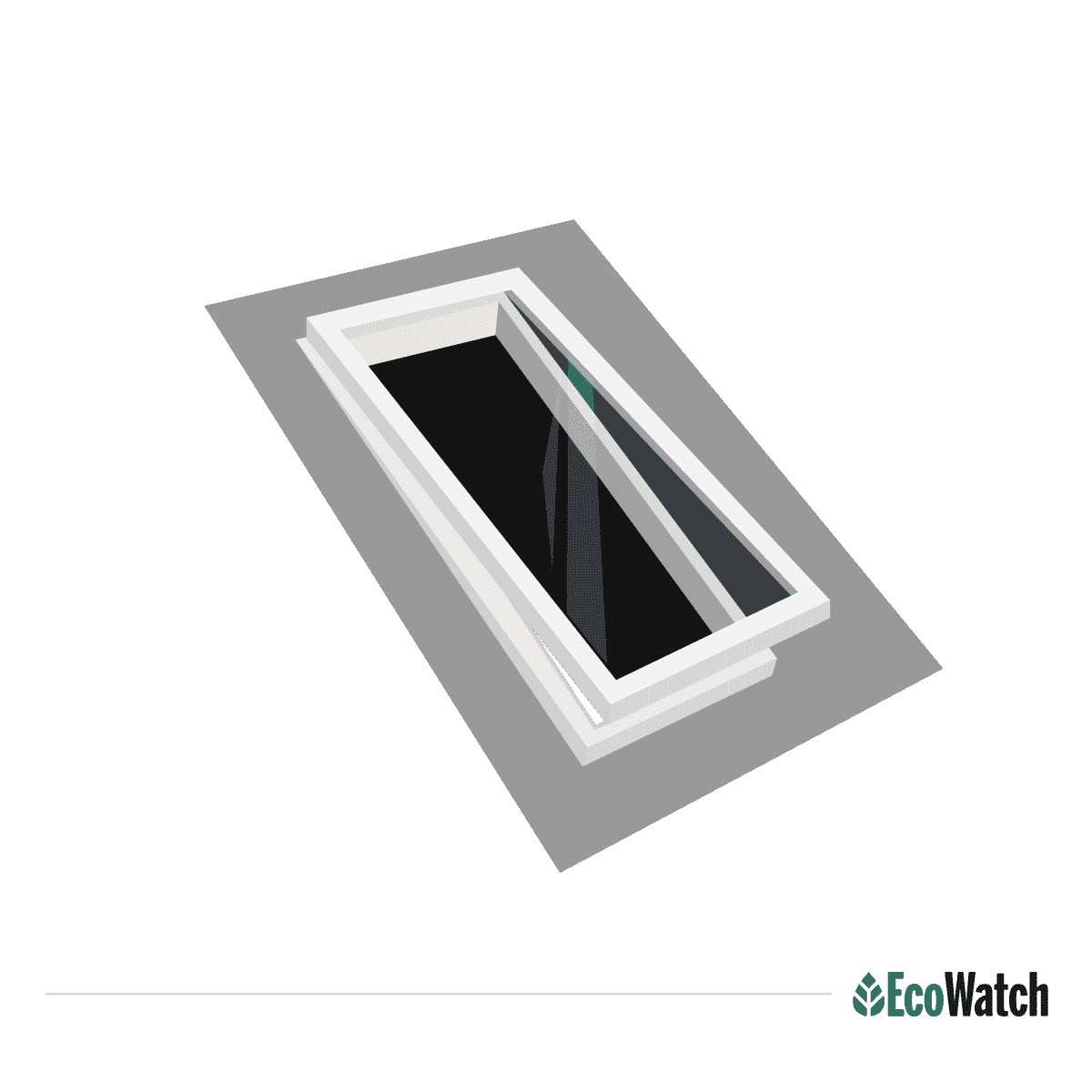
Cost
Skylight windows cost around $1,000 to install, and a professional installation is required to limit the risk of leaking.
Energy Efficiency
Skylight windows can open or remain fixed. Those that are fixed are as efficient as picture or arched windows. Those that open are about as efficient as casement windows, which is the most efficient style of opening window.
Pros
- Provide lots of natural sunlight
- Low maintenance
- Can provide some ventilation
Cons
- Prone to leaking
- Can be challenging to open and close
- Expensive
Round or Circle Windows

Cost
You can expect a round window to cost you around $800 to $1,000 to install, given the difficulty of framing this type of window.
Energy Efficiency
Circle windows are highly energy-efficient and will reduce heat transfer about as much as any other equal-sized fixed window. However, they tend to be smaller than other styles, so they’re often more energy-efficient than picture windows.
Pros
- Provide a unique appearance
- Allow sunlight into your living area
- Highly energy efficient
Cons
- Don’t provide ventilation
- Challenging to install
- Expensive
Oriel Windows

Cost
Oriel windows are heavy, which makes them challenging to install on upper stories. You can expect to pay around $1,500 to install one.
Energy Efficiency
Fixed oriel windows have more glass exposed to the exterior than picture windows, meaning they are less energy efficient. However, they are more efficient than opening styles. Oriel windows that open are not as energy efficient as fixed versions.
Pros
- Add a unique look to your home
- Provide abundant sunlight
- Can sometimes offer ventilation
Cons
- Not as energy-efficient as flat fixed windows
- Expensive to install
- Can be challenging to clean on second stories
Cottage Windows
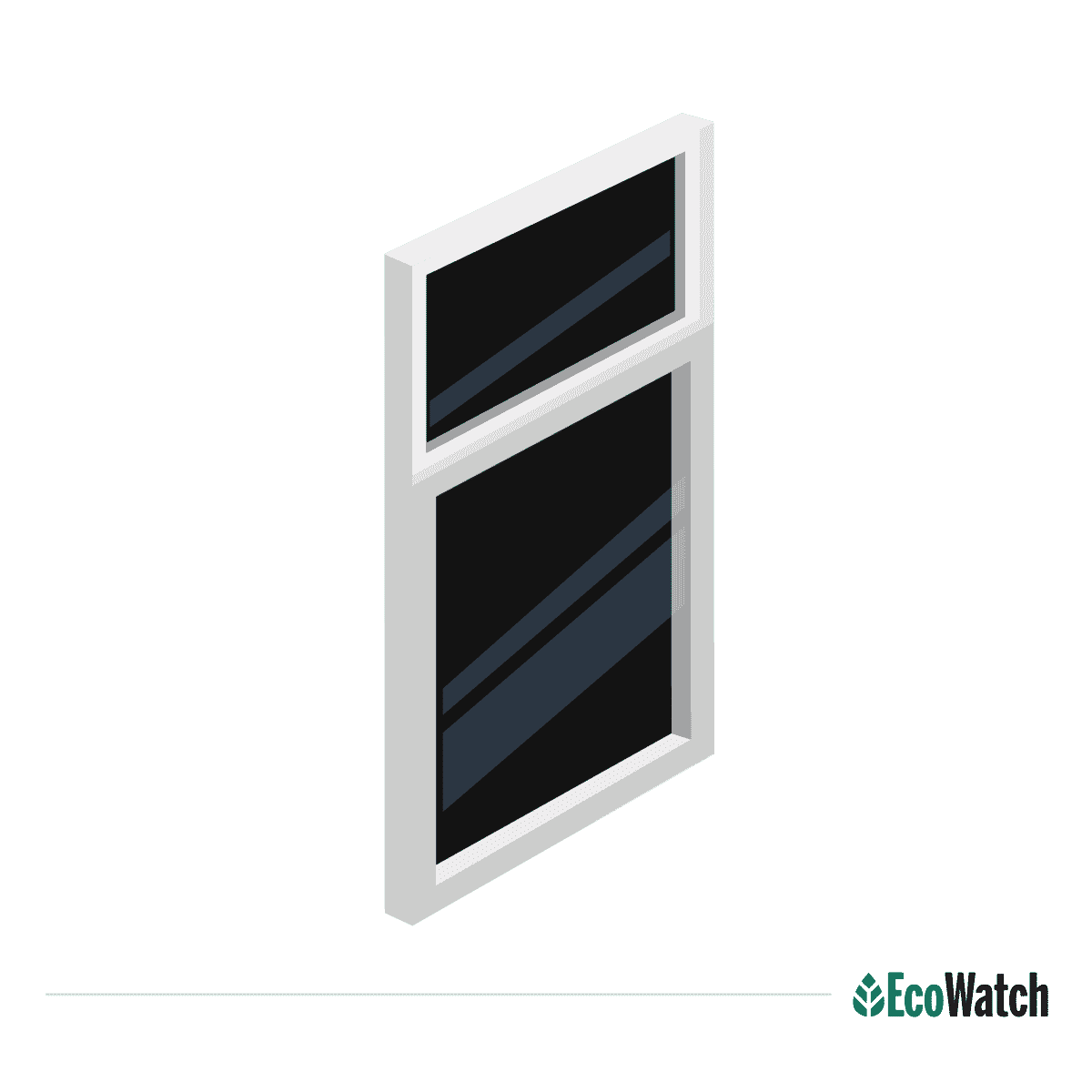
Cost
Cottage windows are about the same price as a double-hung window, averaging around $475. They are less common than other styles and can be more challenging to find.
Energy Efficiency
Cottage windows are just slightly less energy efficient than single-hung windows, as the longer lower sash has a longer side that slides and creates an imperfect seal. They are also less energy efficient than all fixed windows.
Pros
- Add to your home’s curb appeal
- Provide ventilation
- Allow ample sunlight into your home
Cons
- Not as energy-efficient as fixed windows
- Can be challenging to clean the exterior
- More expensive than similar single-hung windows
Three-Panel Slider Windows
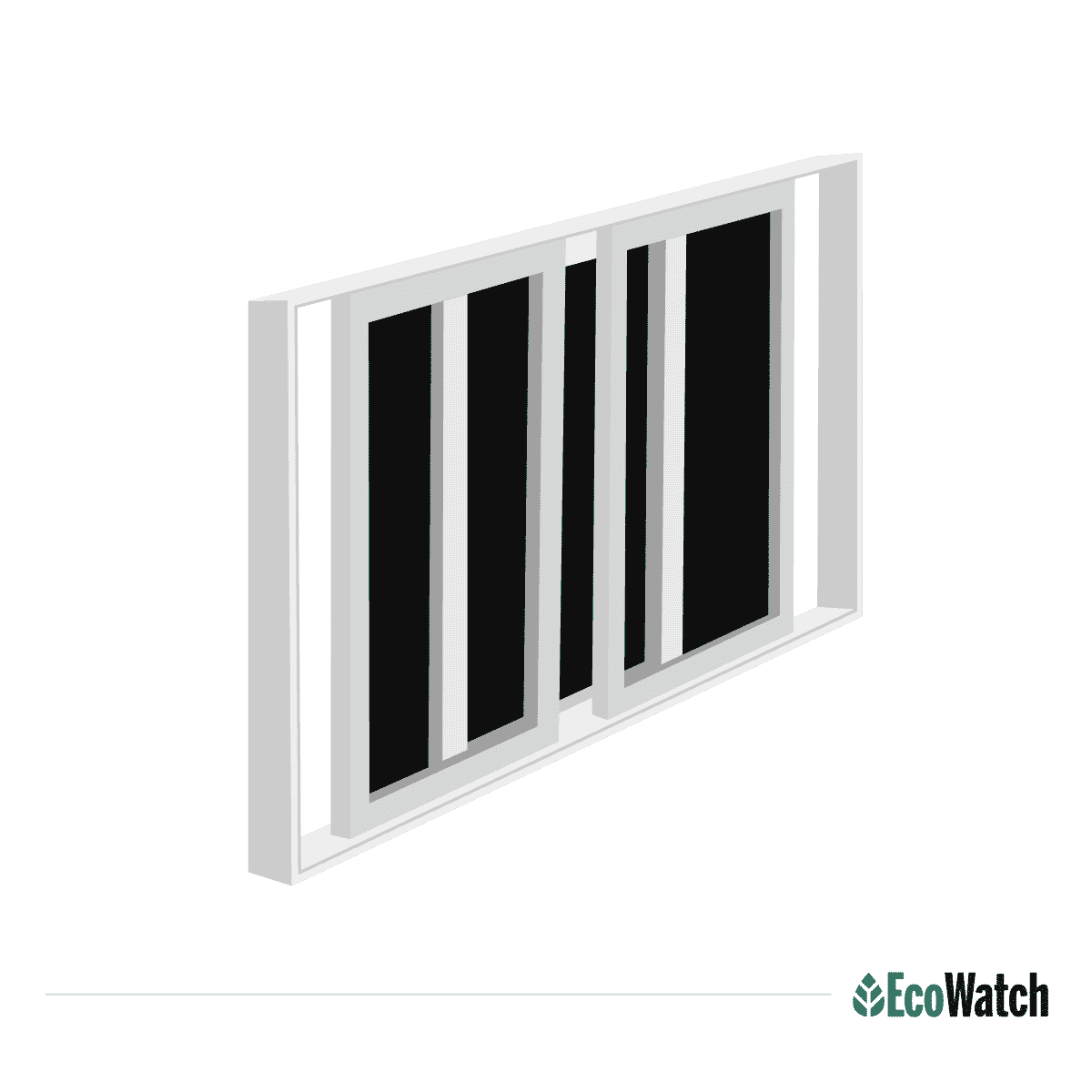
Cost
Three-panel sliders are more costly than other types of sliding windows, as they are more complex and often larger. You will pay around $800 for a three-panel slider.
Energy Efficiency
Three-panel sliders are among the least energy-efficient windows. Each sliding sash creates an imperfect seal with the one next to it, and each also has an imperfect seal with the frame around it.
Pros
- Unique and intriguing style
- Offers plenty of ventilation
- Provides abundant sunlight
Cons
- More expensive than two-panel sliders
- Lacks energy efficiency
- Less secure than two-panel sliders
Other Shapes
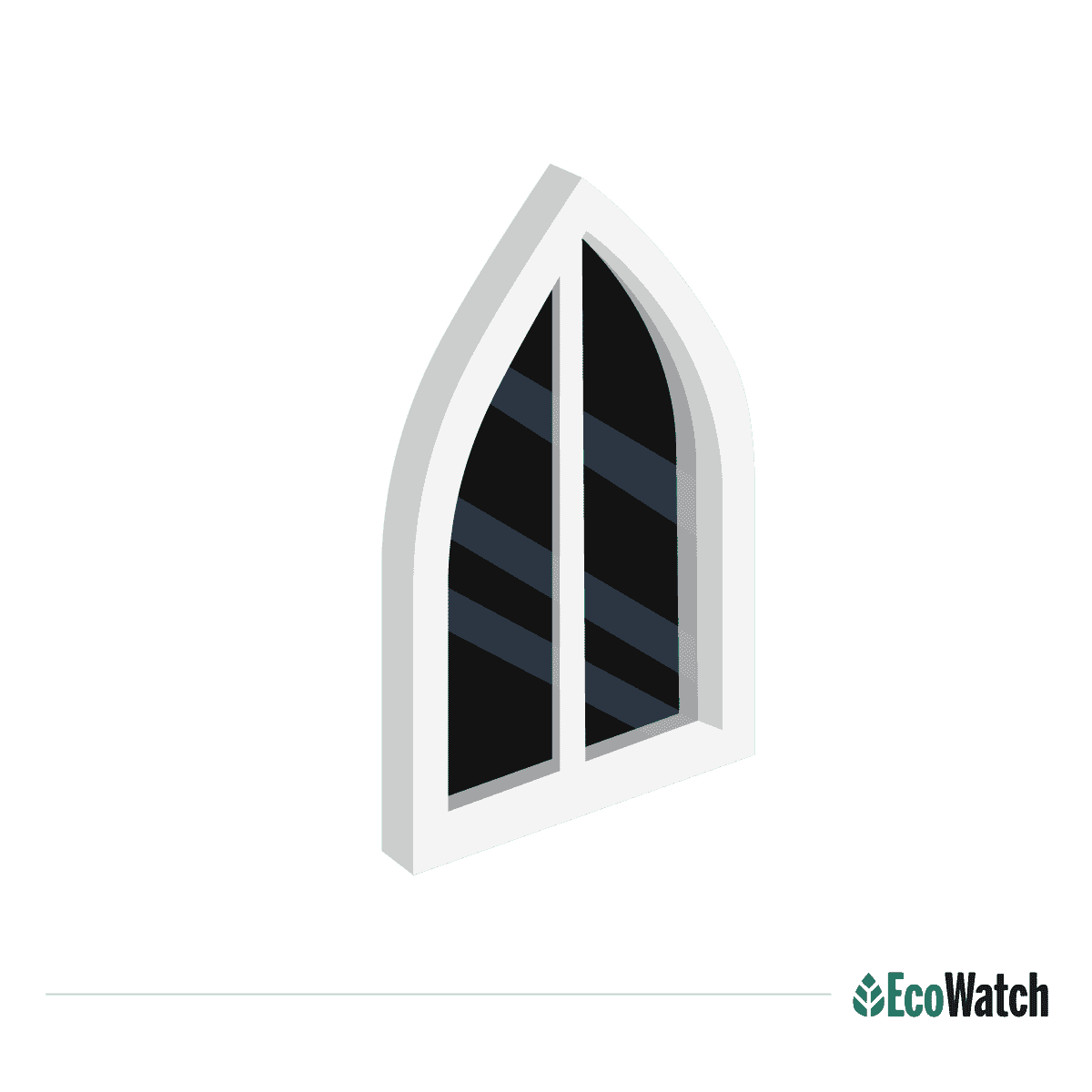
Cost
Windows of different shapes can range significantly in price, from around $300 to upwards of $2,000. The price depends largely on the size of the window and how challenging it is to frame it.
Energy Efficiency
Uniquely shaped windows are almost always fixed, which means they will tend to be more energy-efficient than all openable windows. The smaller the window, the more energy-efficient it will be, regardless of the shape.
Pros
- Add a unique appearance to your home
- Fully customizable
- Usually quite energy efficient
Cons
- Can be very expensive
- Can be challenging to find
- Can be challenging to clean the exterior
Specialty & Custom Windows
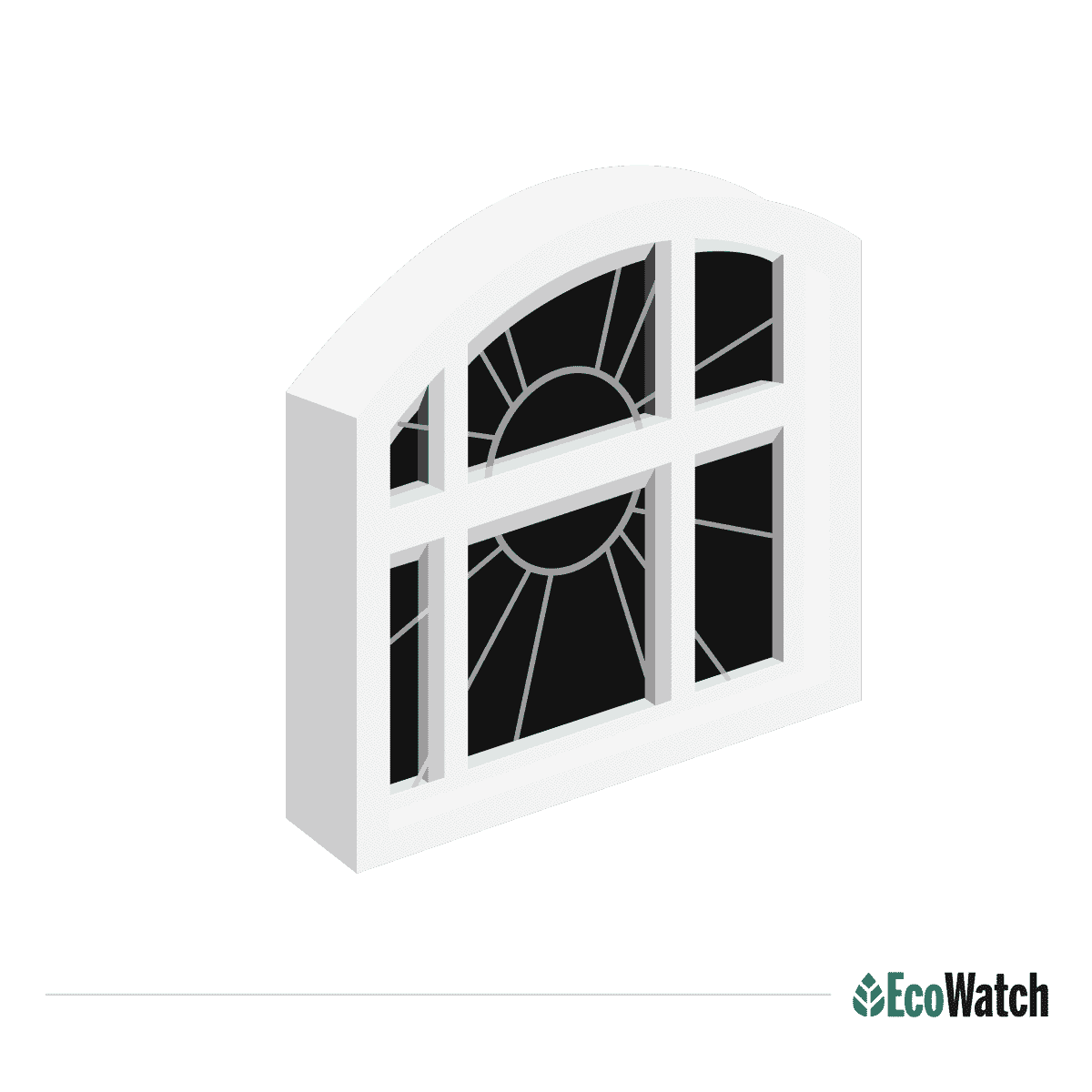
Cost
Specialty and custom windows tend to start around $1,000 for very small windows and can climb to well over $7,500, depending on the size and shape.
Energy Efficiency
Every custom window is different, so it’s impossible to say how energy efficient yours will be. Those that open will be less energy efficient than fixed options.
Pros
- Perfectly suit your needs
- Made to fit your home
- Can add beauty and intrigue to your home’s exterior
Cons
- Very expensive
- Often require a long lead time
- Only window design companies offer them
Which Types of Windows Are the Most Energy Efficient?
With increasing concerns about carbon footprints, many homeowners are wondering about the efficiency of different types of windows. By choosing a window with a high efficiency rating, you can minimize your heating and cooling bills, make your home more comfortable, and reduce your contribution to global warming.
Fixed windows — those that don’t open — will always be more energy efficient than openable window styles. By their nature, moving sashes have imperfect seals that allow for some heat transfer. Sashes that slide are less efficient than those that pivot, making casement windows the most efficient opening style. Additionally, the smaller the window, the less heat transfer will take place through the glass, and the more energy efficient your window will be.
The type of glass matters as well. Single-glazed windows are the least energy efficient but also the most affordable. Double-glazed windows add another layer of glass and an insulating gas — usually argon or krypton — sealed between the panes to improve efficiency. Triple-glazed windows have three panes of glass and two layers of gas for maximum efficiency.
Lastly, the frame material matters. Fiberglass and wood windows are among the most efficient, while vinyl windows are more affordable but also well-insulating.
Below are the top five most energy-efficient window types:
- Glass block windows
- Picture or arched windows
- Other fixed styles (transom, circular, etc.)
- Casement windows
- Awning or hopper windows
FAQ: Window Types
Double-hung windows are, by far, the most common style in America. They’re affordable, easy to clean, and offer sunlight and ventilation. Other common styles include single-hung windows, casement windows, and picture windows.
The size of the window is a major cost factor, with larger windows requiring more material and being more challenging to install. The location of the window also matters, as windows on the second floor are naturally more dangerous and difficult to install. The quality of the glass (single-, double- or triple-glazed) is a huge cost factor as well, with more efficiency costing more. The functionality of the window is a minor cost factor, with openable windows costing more than fixed options.
All fixed windows are airtight, as they have no seams exposed to the elements. These include glass block windows, picture windows, circle windows and transom windows. Of the opening window styles, casement windows, awning windows and hopper windows are the most airtight but do allow some air to seep through the seams.

 233k
233k  41k
41k  Subscribe
Subscribe 



